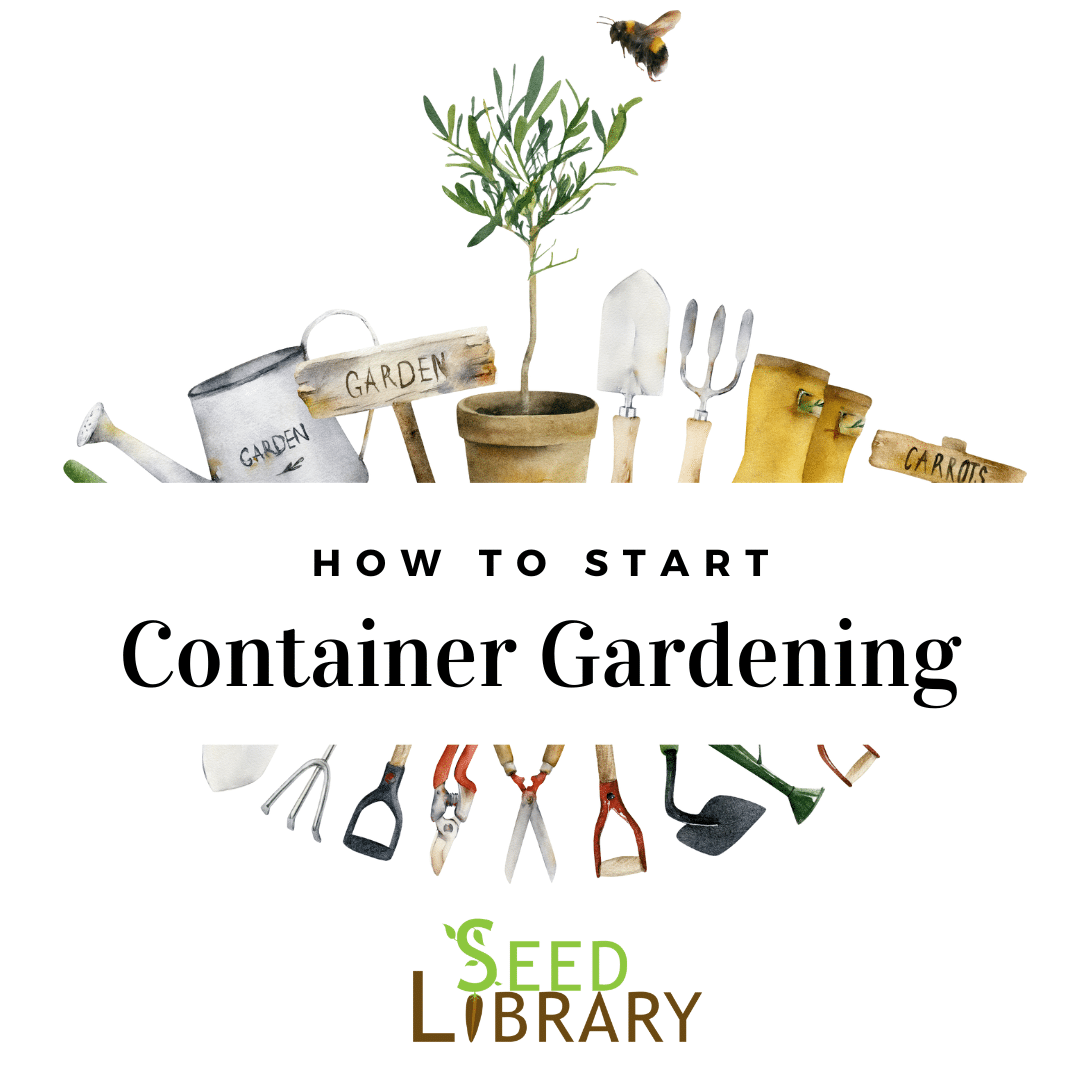By Julia Welzen, Community Engagement Coordinator

One of the most common questions we get at the Hamilton East Public Library Seed Library is, “What can I plant in a container?” For those of us who don’t have yards or who choose to garden with containers, we can still enjoy a botanical oasis. As with all gardening, be sure to do lots of research for the types of plants you are most interested in online or from HEPL’s own collection. If you use social media, hashtags like #containergardening and #urbangardening can provide even more inspiration and tips.
Getting Started
First, evaluate your space. While it’s not the most exciting step, it will be the most important for gardening success.
- How much light does your space get? Is it sunny, shady, or both?
- How much space do you have? How many containers are you planning to use?
- How will you water your plants?

Next, choose your containers and plants. Be sure to select plants and containers that are appropriately sized. This is where you get to be creative!
- What kind of containers do you plan to use?
- What’s your budget? Will you be purchasing containers, potting mix, fertilizer/compost, seeds/plants or do you already have some of these things? Can you make or repurpose containers?
- Be sure to use plant saucers under your containers if you need to contain excess water!
- What plants work for your space, budget, and lifestyle?

Herbs
Herbs are among the easiest plants to grow in a container. They’re attractive on a patio or deck and usually grow well in a sunny spot inside while the weather is too cold outside. They’re generally unfussy as long as they get watered before turning crispy, and they can thrive in part shade to full sun. While many are easily grown from seed (like basil and cilantro), others are best purchased or propagated from an existing plant (like rosemary and sage).

Spicy globe basil

Rosemary
Herbs that grow well in containers include:
- Chives
- Cilantro
- Mint
- Parsley
- Sage
- Rosemary
- Thyme
- Basil
- Oregano
- Lemon verbena
- Lemon grass
Vegetables & Fruit
Vegetables require a little more effort to grow in containers, depending on what you select, how much space you have, and what the light is like. Both of my last two homes have been too shady to grow sun-loving vegetables like tomatoes and peppers, which need 6-8 hours of direct sunlight every day, so I put my effort and money towards veggies that will produce better in the conditions I have (like lettuce and peas).

Peas

Variety of greens
These varieties will do well in small to medium containers:
- Greens, like lettuce, arugula, spinach, mustard greens, tatsoi, and mizuna
- Peas (with trellis or cage)
- Carrots
- Beets
- Fennel
- Radishes
These varieties require large containers:
- Tomatoes
- Peppers
- Potatoes
- Eggplant
- Melons
- Cucumbers (with trellis)
- Squash
- Melons (smaller varieties)

Cucumbers

Fava beans
Flowers & Ornamental Plants
Flowers for containers provide a bright pop of color and interest, and you can find them at almost any gardening store. They are generally annuals, so you probably won’t see them sprouting new leaves the next spring. Flowers and other ornamental plants allow your creativity to shine, combining colors, shapes, and sizes into a masterpiece. These flowers and ornamentals are frequently used in container gardening, among hundreds of other common varieties:
- Marigolds
- Begonias
- New Guinea Impatiens/Impatiens/Sunpatiens
- Coleus
- Celosia
- Ferns
- Lantana
- Snapdragons
- Sunflowers (shorter varieties only)

Begonia

Jasmine
Native Plants
The flowers in the list above are not native to the American Midwest. Some are hybrids or don’t produce seeds. They often don’t provide food for wildlife, although you might see butterflies and birds checking them out due to their shape and bright colors. Native flowers and grasses do feed pollinating insects, butterflies, and birds, and I’ve had success with several varieties. The Missouri Botanical Garden has helpful tips for container gardening with natives (feel free to experiment with other varieties!). These native plants (among others) will likely do well in medium to large containers:
- Purple coneflowers
- Coreopsis (plains and lance-leaved)
- Blazing star
- Little bluestem grass
- Prairie dropseed
- Rattlesnake master

Coneflower

Plains coreopsis
There’s a wealth of gardening resources out there (check out our video below!) to help you find the perfect plants to start a container garden in your space. Many of the plants above can be found in the HEPL Seed Library. Happy Gardening!




